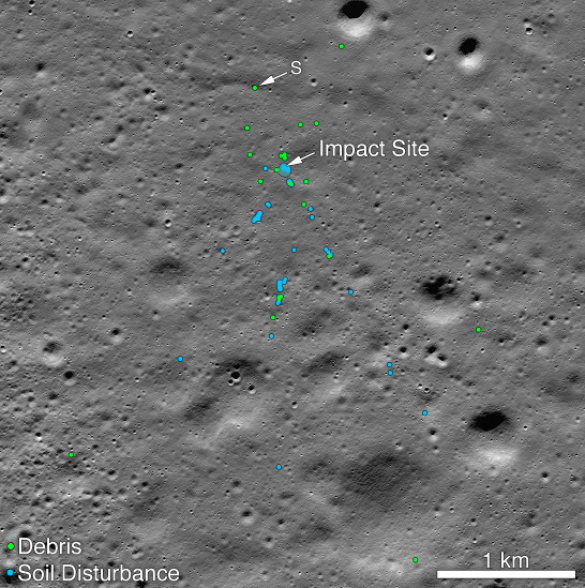
Washington: In an extraordinary feat, NASA's Lunar Reconnaissance Orbiter (LRO) has captured a captivating image of India's Chandrayaan-3 lunar lander.
The Chandrayaan-3 mission achieved a historic lunar touchdown near the Moon's enigmatic south pole on August 23, marking a significant milestone in lunar exploration.
The LRO's camera lens locked onto this momentous occasion on August 27, merely four days following the successful landing. Chandrayaan-3's groundbreaking achievement is marked by its distinction as the first mission ever to touch down in the vicinity of the lunar south pole, a region believed to hold vast reservoirs of valuable water ice.
Also Read: China Expresses Support for India Hosting G20 Summit, Pledges Support
The captured image showcases the lander's shadow against the lunar surface, framed by a radiant halo. This celestial halo, as explained by NASA, is the result of the interaction between the lander's rocket plume and the fine-grained lunar regolith (soil). The LRO's camera, positioned at a 42-degree slew angle, delivered this striking oblique view.
Chandrayaan-3's mission includes both the Vikram lander and the Pragyan rover. Following their lunar arrival, Pragyan was deployed to explore the lunar terrain. Both Pragyan and Vikram embarked on nearly two weeks of exploration before being "put to sleep" to prepare for the lunar night, which presents extreme cold and darkness.
Also Read: Japan's Q2 Economic Growth Slows to 0.1%, Below Expectations
The Indian Space Research Organisation (ISRO) has expressed optimism that both Pragyan and Vikram will "awaken" around September 22. Importantly, both have accomplished their primary mission objectives, contributing valuable data to lunar science.
The Moon's polar regions have emerged as focal points of interest in lunar exploration due to the potential presence of water ice reserves. NASA's Artemis 3 mission, slated for late 2025 or 2026, aims to deliver astronauts to the lunar south pole. This mission underscores the broader vision of establishing lunar bases in the polar regions over the coming years. The utilization of resources discovered by missions like Chandrayaan-3 is pivotal to supporting human outposts and advancing exploration within our solar system.
Also Read: Jacob Lew Nominated as U.S. Ambassador to Israel by President Biden
Chandrayaan-3's achievement not only adds to our understanding of the Moon's south pole but also reinforces the collaborative efforts of nations in the pursuit of lunar exploration, propelling humanity toward new frontiers in space exploration.